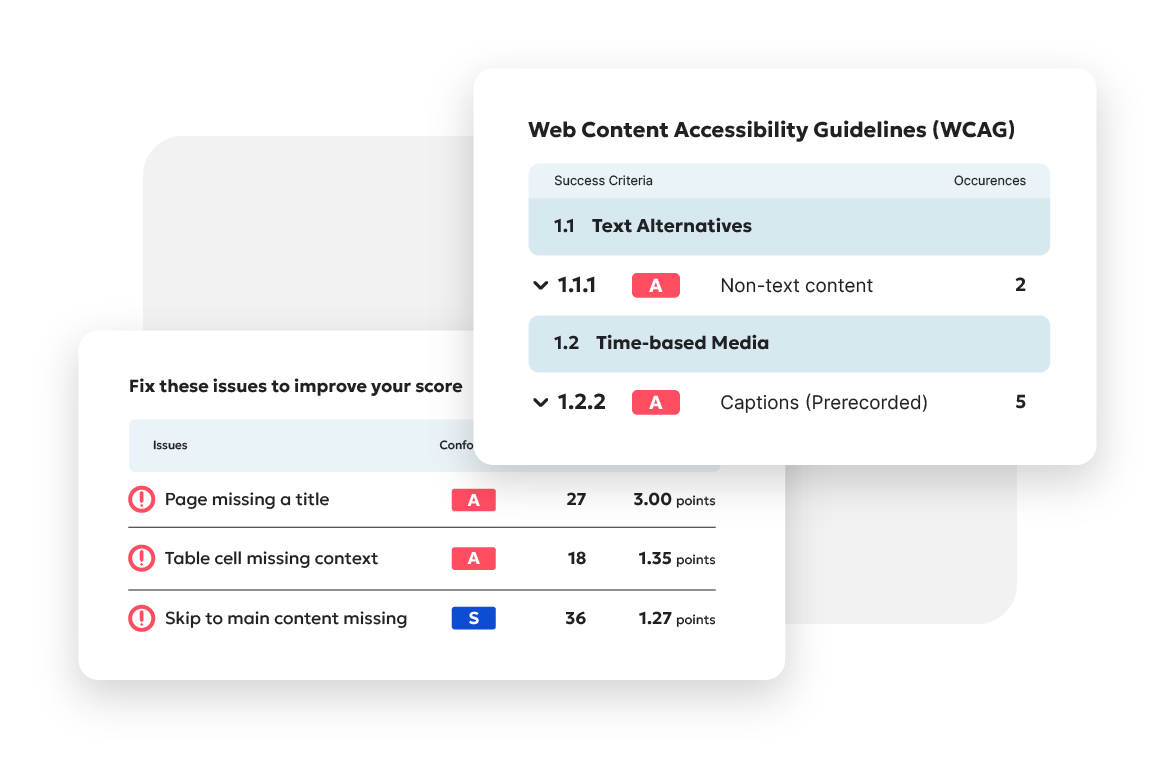This blog has been updated for accuracy and freshness.
When 27 percent of Canadians over the age of 15 have a disability, it’s critical to be aware of how those 8 million people face barriers every day, whether that’s limitations in their physical environment or inaccessible websites and web content.
The Government of Canada and many provinces are currently working towards making Canada a more inclusive, barrier-free country, but if you need to know what federal and provincial laws impact your organization, it can be confusing.
Here’s an overview of current and proposed legislation that will help keep you on top of accessibility requirements and timelines.
Federal law and regulations
Before we go into detail, it’s worth knowing that Canada has created a “National Standard of Canada,” which is approved for use throughout the country. Accessibility Standards Canada has adopted the European harmonized standard on Information and Communication Technology EN 301 549, which is a voluntary measure and will apply to all private and public sector organizations in federally regulated sectors. The standard directly references WCAG 2.1 Level AA.
The Accessible Canada Act (Bill C-81)
In June 2018, Kirsty Duncan, the Minister of Science and Sport and Persons with Disabilities, proposed what is now the Accessible Canada Act: An Act to Ensure a Barrier-free Canada (ACA) to parliament. This bill was created as a result of Prime Minister Justin Trudeau’s mandate to develop federal legislation that ensures greater inclusion of Canadians with disabilities.
On July 11, 2019, the ACA became law after receiving Royal Assent. The Act aims to prevent accessibility barriers in information and communication technologies, including digital content and the technologies used to access it. Requirements of this Act, including web accessibility, apply to organizations under federal jurisdiction.
To comply with the Act, organizations covered by the Act must:
- Consult people with disabilities
- Publish accessibility plans about how they are finding, removing, and preventing barriers
- Set up ways to receive and respond to feedback about accessibility
- Publish progress reports about how they are following their accessibility plans
To be on the safe side, we recommend organizations covered by the Act to conform with the standard recommended by Accessibility Standards Canada, and, therefore, EN 301 549, which directly references WCAG 2.1 Level AA.
Provincial regulations
Separately, several provinces have adopted their own accessibility laws, some of which provide clarity on the actual technical standards for those jurisdictions.
Accessibility for Ontarians with Disabilities Act (AODA)
In 2005, the Accessibility for Ontarians with Disabilities Act (AODA) became law, making Ontario the first province in Canada to enact accessibility legislation of this scope. The AODA is based on the 2001 Ontarians with Disabilities Act and mandates a set of standards that public, private, and non-profit organizations must comply with. The aim of the Act is to create a barrier-free Ontario by 2025.
Private or non-profit organizations with more than 50 employees and all public sector organizations must make their website and web content compliant with Web Content Accessibility Guidelines (WCAG) 2.0 Level AA.
The Accessibility for Manitobans Act (AMA)
The Accessibility for Manitobans Act (AMA) became law in 2013. The Government of Manitoba is striving to create a more inclusive Manitoba.
The AMA is made up of five accessibility standards that focus on key areas of daily life. Among these is the Accessibility Standard for Information and Communications, which addresses barriers to accessing information, including information provided on websites. It mandates both private and public sector organizations to meet WCAG 2.1 Level AA.
The Nova Scotia Accessibility Act
Nova Scotia’s Accessibility Act became law in April 2017, making Nova Scotia the third province to enact accessibility legislation. Standards under the Act are being developed in six areas, including Information and Communications (websites).
The Accessibility Advisory Board recommended to the Minister of Justice that the sixth standard to be developed starting in 2024 should be information and communication. This should provide more clarity on what is expected to comply. (You can learn more here.)
The British Columbia Act
The Accessible British Columbia Act was introduced in 2021. The British Columbia Government is expected to lead the way, and while it’s not clear yet which types of private organizations will have to follow these regulations, those who do not follow the rules can be fined up to $250,000.
Government and organizations in scope must establish:
- A provincial accessibility committee and technical committees
- An accessibility plan
- A tool to receive feedback on accessibility
There is no technical standard yet, as a committee appointed by the Minister of Social Development and Poverty Reduction will help make the standards which will likely be turned into laws.
The Newfoundland and Labrador Accessibility Act
Introduced in 2021, this enabling legislation allows the Government of Newfoundland and Labrador to outline the principles and goals for an accessible province. The Accessibility Act aims to improve accessibility by identifying, preventing, and removing barriers that prevent persons with disabilities from full participation in society.
Under the Accessibility Act, public bodies are required to develop an Accessibility Plan and make it public within two years. The Act also outlines what the Accessibility Plan should include, the measures to take in barrier removal, and the procedures to assess that the measures are working.
Future Accessibility Laws and Legislation
There’s no doubt that Canada and its provinces and territories are working to become more inclusive, by law, to all citizens and we can expect provinces to refine their regulations, adding more stringent technical standards, likely around the WCAG international standard.

Ready to create more accessible and inclusive web content?
Siteimprove Accessibility can help you create an inclusive digital presence for all.
Request a demo

